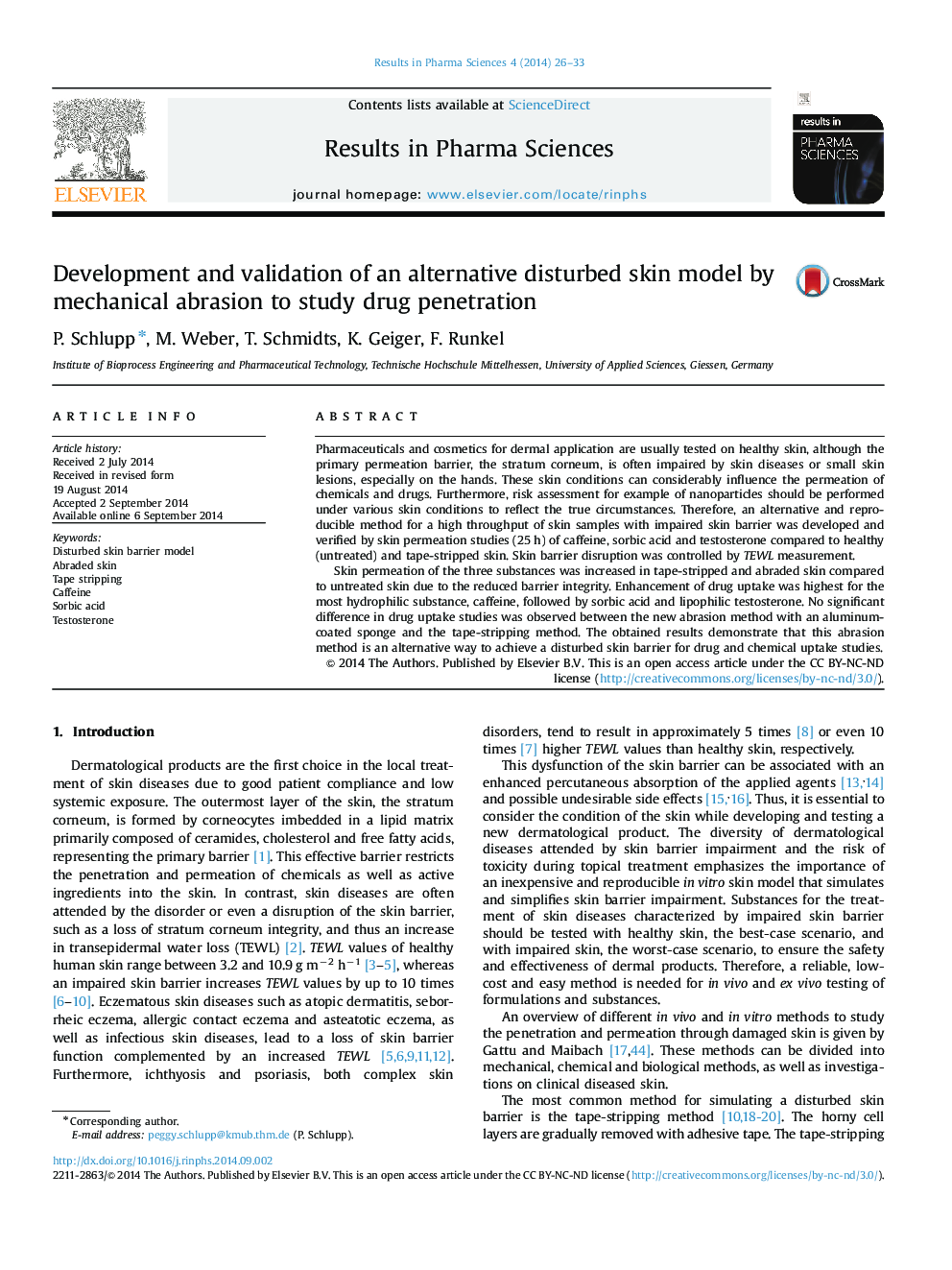| کد مقاله | کد نشریه | سال انتشار | مقاله انگلیسی | نسخه تمام متن |
|---|---|---|---|---|
| 1440031 | 1509271 | 2014 | 8 صفحه PDF | دانلود رایگان |
Pharmaceuticals and cosmetics for dermal application are usually tested on healthy skin, although the primary permeation barrier, the stratum corneum, is often impaired by skin diseases or small skin lesions, especially on the hands. These skin conditions can considerably influence the permeation of chemicals and drugs. Furthermore, risk assessment for example of nanoparticles should be performed under various skin conditions to reflect the true circumstances. Therefore, an alternative and reproducible method for a high throughput of skin samples with impaired skin barrier was developed and verified by skin permeation studies (25 h) of caffeine, sorbic acid and testosterone compared to healthy (untreated) and tape-stripped skin. Skin barrier disruption was controlled by TEWL measurement.Skin permeation of the three substances was increased in tape-stripped and abraded skin compared to untreated skin due to the reduced barrier integrity. Enhancement of drug uptake was highest for the most hydrophilic substance, caffeine, followed by sorbic acid and lipophilic testosterone. No significant difference in drug uptake studies was observed between the new abrasion method with an aluminum-coated sponge and the tape-stripping method. The obtained results demonstrate that this abrasion method is an alternative way to achieve a disturbed skin barrier for drug and chemical uptake studies.
Figure optionsDownload high-quality image (234 K)Download as PowerPoint slide
Journal: Results in Pharma Sciences - Volume 4, 2014, Pages 26–33
